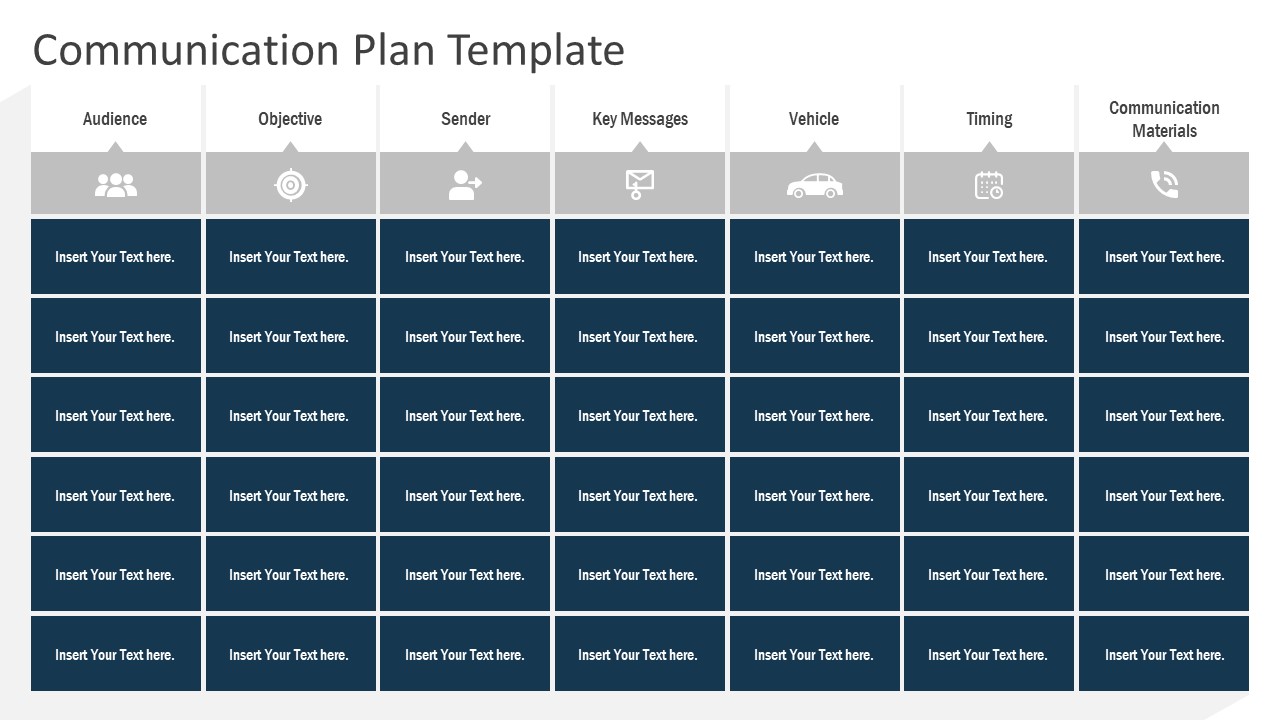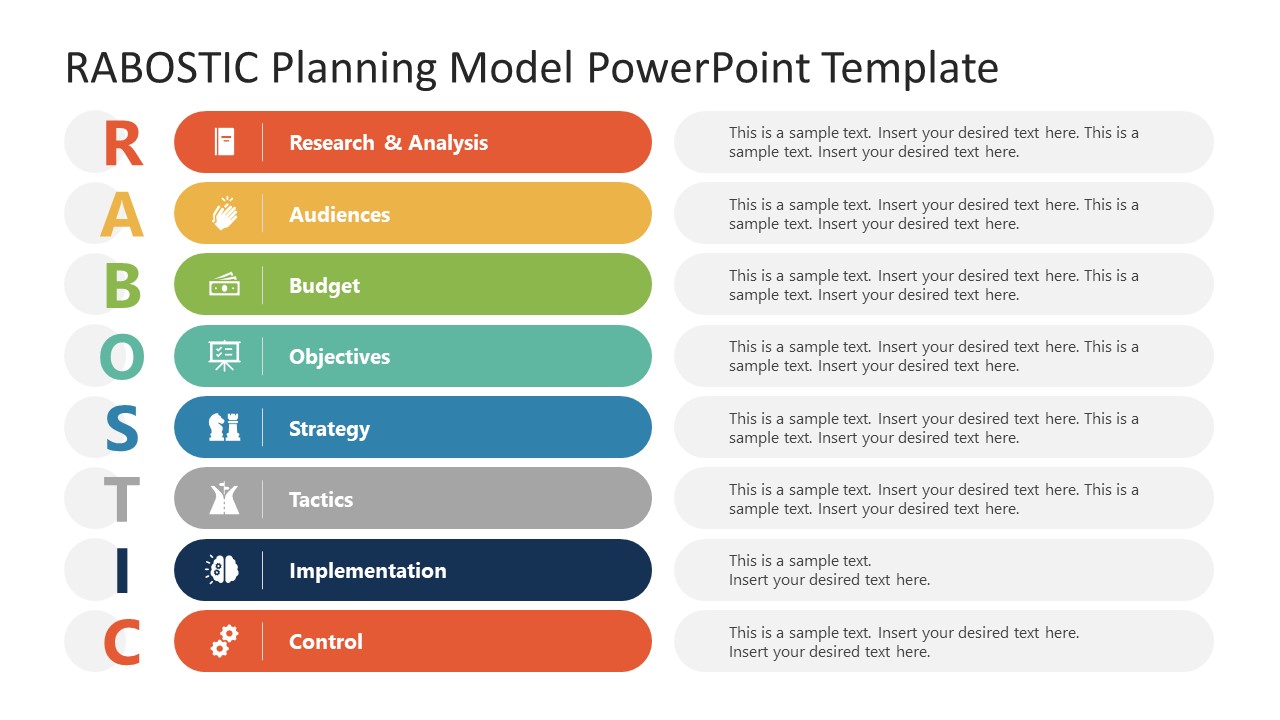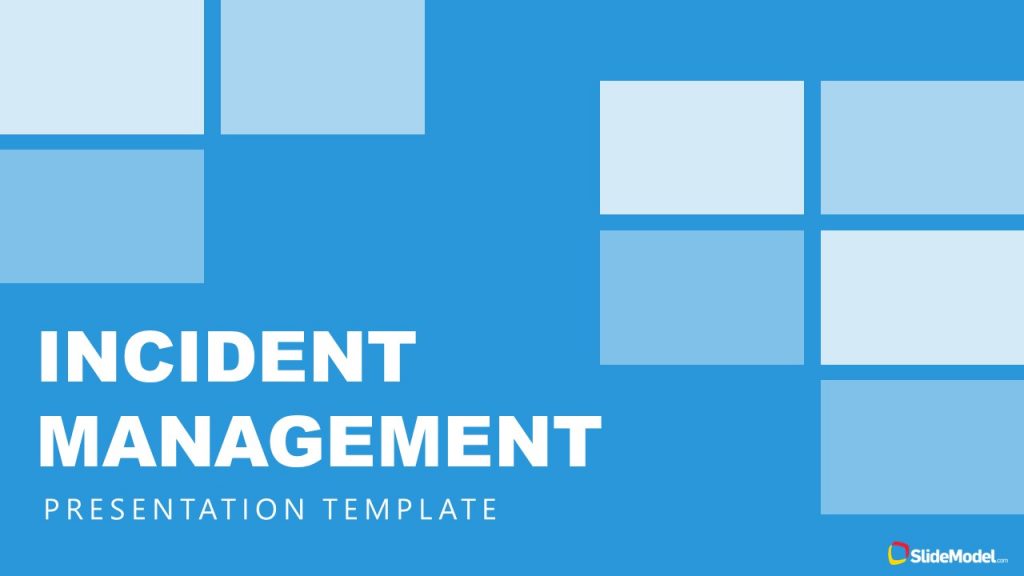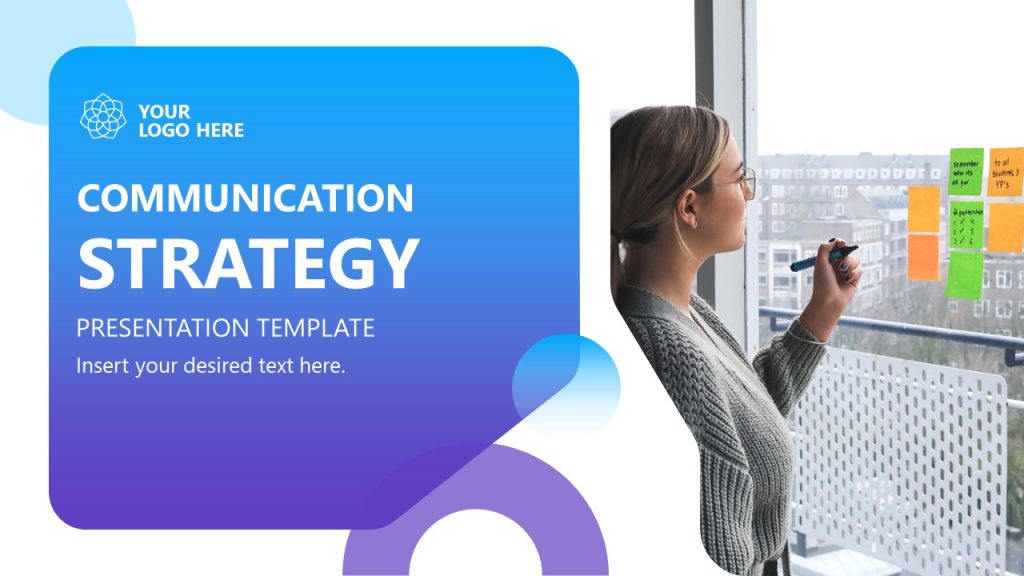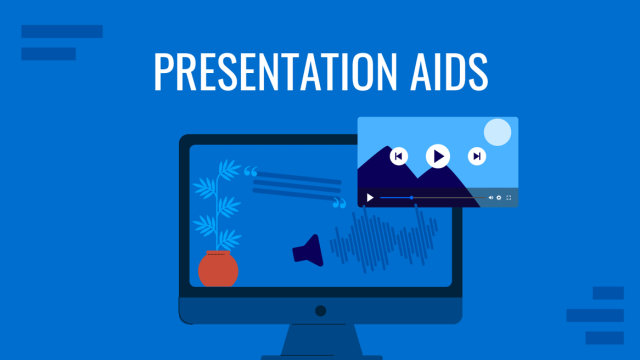
A communication plan is one of the core elements of effective organizational communication. Imagine a large corporation is undergoing a merger. Without a communication plan, employees may face uncertainties, leading to a potential dip in morale and productivity.
In this guide, we’ll unravel the role of a Communication Plan Template, emphasizing its importance in streamlining the planning process. We’ll explore the art of delivering a compelling Communication Plan Presentation. In doing so, we’ll focus on the content and the strategic structuring of information to engage stakeholders effectively.
Table of Contents
- What is a Communication Plan?
- Why Should Organizations Use a Communication Plan?
- Components of a Communication Plan
- How to Write a Communication Plan
- The Role of Communication Plan Template
- How to Deliver a Communication Plan Presentation
- Recommended Communications Strategy Templates
- References
What is a Communication Plan?
A Communication Plan serves as a strategic tool that outlines what information needs to be communicated, who the target audience is, and the optimal timing for distribution. Its purpose is to ensure messages are clear, consistent, and aligned with overarching goals.
Truschke (2018) [3] outlines a Communication Plan as “a strategic tool defining the what, how, when, and who in specific strategic communications”. The purpose is to identify who needs awareness and information about the project, how and how frequently information will be shared, and who is responsible for the distribution. It is a crucial element in a company’s management toolkit, enabling effective communication of changes or events like acquisitions, property closures, personnel shifts, layoffs, and corporate reorganizations.
Defining and updating a Communication Plan is a collaborative effort in large organizations. It involves various stakeholders, including communication specialists, department heads, and executives. The plan evolves in response to changes in the organizational landscape, industry trends, and emerging challenges.
Why Should Organizations Use a Communication Plan?
Systematic Approach to Communication
We believe a Communication Plan provides a structured framework for delivering information. Consider a multinational corporation considering a company-wide policy change. Without a systematic approach outlined in a Communication Plan, the risk of fragmented and inconsistent messaging across departments increases substantially. By defining channels, audiences, and messaging protocols, a Communication Plan ensures that communication is not haphazard but deliberate and cohesive.
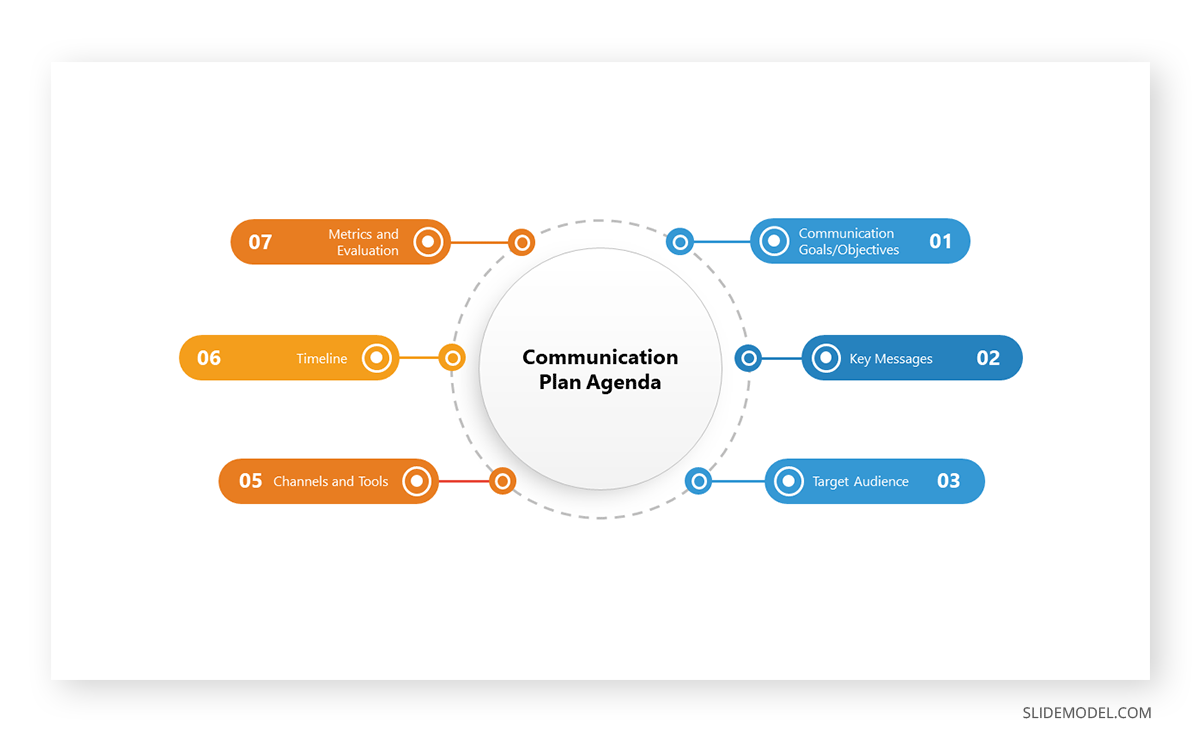
Mitigating Misunderstandings
In the absence of a clear communication strategy, misunderstandings can increase within an organization. For instance, miscommunication between marketing and product development teams might lead to inconsistent messaging during a product launch. A communication plan is a preemptive measure, establishing a shared understanding among teams, reducing the likelihood of misinterpretations, and ensuring everyone is on the same page.
Enhancing Transparency
Failure to provide clear and timely information can lead to skepticism and mistrust. A Communication Plan facilitates transparency by delineating when and how information will be shared. This is exemplified in scenarios such as mergers or acquisitions, where uncertainties can be allayed through a communication planning template, assuring stakeholders of the organization’s commitment to openness.
Components of a Communication Plan
A Communication Plan is built on distinct components that collectively form a strategic framework.
Objectives and Goals
Clearly defined objectives and goals provide the foundation for a Communication Plan. Consider a scenario where a tech company is launching a new software product. The plan’s objectives might include increasing user engagement and communicating the product’s unique features.
Target Audience Identification
Understand the audience. In a healthcare organization, for instance, a Communication Plan would distinguish between communicating with medical staff, administrative personnel, and patients. Tailoring messages to each group ensures relevance.
Key Message Development
Crafting compelling and coherent messages is necessary for effective communication. In a crisis management situation, a Communication Plan would guide the organization in formulating messages that address concerns transparently while maintaining a sense of control.

Outcome
The outcome of a communication plan is about what people should learn, do, or believe. It involves a clear call to action, aligning messages with the purpose and effectively resonating with the audience.
Channel Selection
Different messages require different channels. Whether using internal emails for staff updates or social media for public announcements, the Communication Plan dictates the appropriate channels to reach the intended audience effectively.

How to Write a Communication Plan
Creating a communication plan is a strategic undertaking that demands a systematic approach. In this section, we’ll meticulously guide you through each process step providing valuable insights into setting SMART goals, conducting audience analysis, and tailoring messages to resonate with diverse stakeholders. Our goal is not just to inform but to empower you, enabling the development of a customized plan tailored to your organization’s unique needs.
Step 1: Setting SMART Goals
A Communication Plan begins with clearly defined and achievable goals. These goals should be SMART: Specific, Measurable, Achievable, Relevant, and Time-bound. Let’s consider the launch of a new internal training program in a large corporation. An example of a SMART goal could be to increase employee participation in the program by 20% within the next quarter.
Tip: Think of your presentation template as more than just a canvas; it visually represents these strategic objectives. Use graphics, charts, or milestones to transform your goals into visually compelling targets that everyone can easily grasp.
Make your objectives pop within the design elements of your presentation. Incorporate visual elements that bring your SMART goals to life. This transforms your goals from mere words into visually engaging targets, enhancing understanding and buy-in from your stakeholders.[2]
Step 2: Identify The Audience
The purpose of communication is to convey a message to a specific audience.
When defining the target audience for your Communication Plan, you need to answer 2 questions [4]:
- Who Do You Ultimately Want to Influence?
- How Can You Reach Your Target Audiences?
The process of answering those questions will trigger segmentation and channel selection. The audience can be the stakeholders or those individuals who directly influence the stakeholders. Divide the audience based on demographics, roles, or interests, ensuring distinct categorization for precise targeting. Tailor communication messages to address each audience segment’s specific needs and concerns. This approach enhances engagement and relevance in a corporate context.
Step 3: Tailoring Messages for Resonance
Tailoring messages is the process of customizing messages that are more relevant for the receiver, with the aim of improving the recipient’s engagement with and understanding of information in the message (Hawkins et al. 454 and Rimer and Kreuter S184). Tailoring messages was first used in marketing to increase consumer engagement with information in product advertisements (Turow 244). Later, communication theory has worked on theorizing about it in organizational structures [5]. A communication plan is not an exception. Focus on the key messages described above. The messages require careful consideration of content, tone, language, and design during development.
For example, consider a scenario where a retail company is launching a sustainability initiative. Tailoring messages for employees might involve emphasizing the positive impact on the environment and job satisfaction. For customers, the focus could be on how their support contributes to a greener future. By aligning messages with audience values and interests, you enhance the effectiveness of your Communication Plan.
Tip: Font choices, color schemes, and imagery should align with the overall design, reinforcing the coherence of your messages. Visual consistency elevates message retention and reinforces your brand narrative.
Practical Tips for Implementation
Utilize Multiple Communication Channels
Different stakeholders may prefer different communication channels. While some employees might respond well to internal emails, others may engage more with in-person meetings or digital platforms. Diversifying communication channels ensures broader reach and resonance.
Create a Communication Calendar
Develop a timeline for communication activities. For instance, a Communication Calendar could outline pre-launch teasers, launch day messaging, and post-launch follow-ups if you’re announcing a product launch.
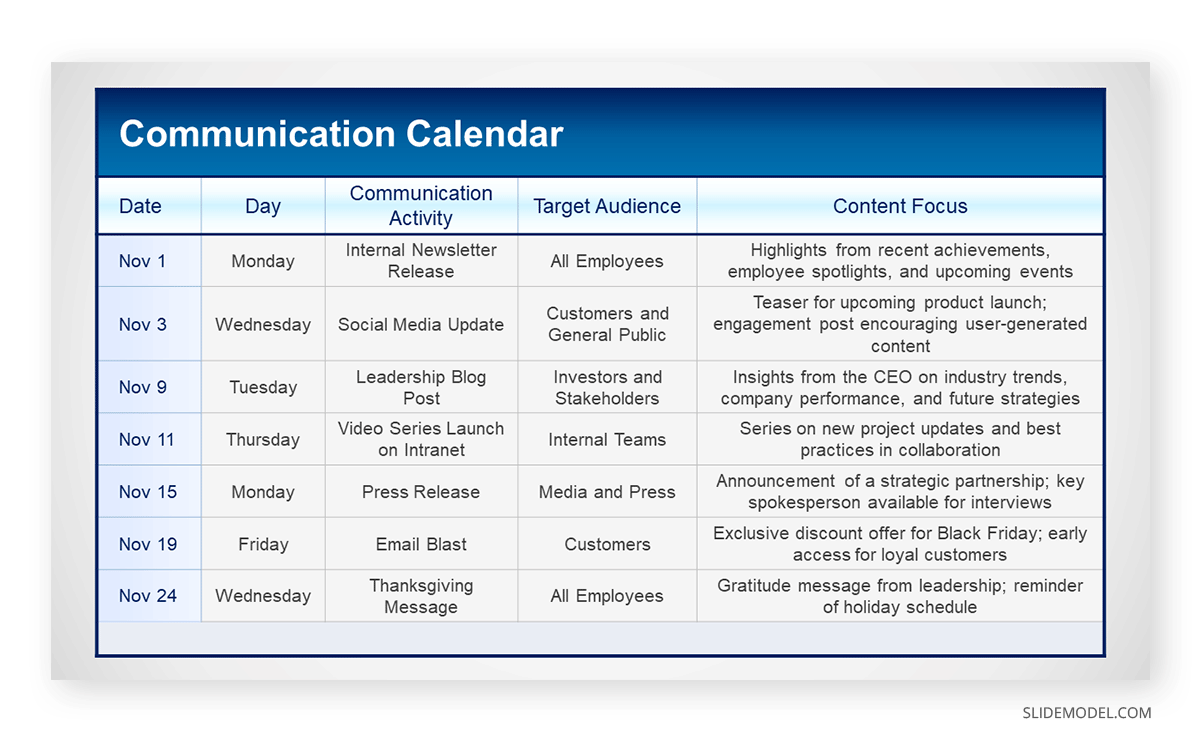
Anticipate and Address Potential Concerns
In any organizational communication, there may be concerns or questions from stakeholders. Proactively anticipate these concerns and incorporate responses into your Communication Plan. This foresight demonstrates transparency and helps maintain stakeholder confidence.
The Role of Communication Plan Template
Adaptability to Scenarios
A communications strategy template is adaptable to various scenarios. For example, a template could be customized for a product launch, with predefined sections for target audience analysis, key messages, and marketing channels. This adaptability ensures the communication plan is tailored to specific goals and contexts.
Time-Saving Tool
At any moment, a free communication plan template is a time-saving tool. Teams can input specific details without starting from scratch, allowing more focus on content creation. This efficiency is particularly valuable in fast-paced environments and when responding to urgent communication needs.
Facilitation of Collaboration
Communication plan templates act as a common language, fostering collaboration. For instance, a communications planning template could provide a shared platform for marketing, product development, and customer service teams to align their strategies for a cohesive campaign[6]. This ensures all departments are on the same page, working towards unified communication goals.
Adherence to Best Practices with Strategy Templates
Strategy templates, especially communications strategy templates, ensure adherence to best practices. For example, a template might incorporate established principles for crisis communication, promoting effective strategies during challenging situations. Adhering to these best practices helps build trust and credibility during critical moments.
Accessibility for Teams through Communication Templates
Communication plan templates, whether PowerPoint Templates or free communication plan templates, provide accessible resources for teams. Team members can easily access and utilize the template, ensuring everyone is aligned and contributing to communication goals. This accessibility promotes collaborative efforts and a shared understanding of the communication strategy across the organization.
Ensuring Consistency
Harmonizing Brand Narratives
Picture a rebranding initiative. The communication template ensures uniformity across communication materials. During the rebranding process, it dictates consistent messaging across press releases, social media announcements, and internal communications, reinforcing the desired brand narrative.
Facilitating Collaboration
Alignment Across Departments
Efficient communication demands smooth collaboration. The Communication Plan Template is a unifying tool, fostering alignment among diverse teams across departments. Specifically, when launching a new service, a communication strategy plan template ensures cohesion by providing a standardized framework for communication goals, strategies, and timelines. This shared foundation cultivates a common understanding among marketing, product development, and customer service teams by promoting a synchronized approach.
Clarity in Roles and Responsibilities
Imagine a crisis management scenario where roles must be clearly defined. The crisis communication template explicitly outlines responsibilities, answering questions like who is responsible for drafting press releases, who oversees social media communication, and who coordinates internal messaging. This clarity minimizes confusion and enhances overall efficiency.
Practical Implementation
Customization for Tactical Precision
Well-designed communication plan templates are not rigid structures. They are flexible, allowing customization based on specific organizational needs or unique communication scenarios. In a scenario like a merger, the template adapts to incorporate the nuances of this strategic move.
Iterative Evolution
Consider a major event like a successful product launch. The best-practice communication strategy template evolves, incorporating lessons learned. Post-launch might be updated to reflect audience feedback, ensuring continuous improvement in future communication plans.
How to Deliver a Communication Plan Presentation
Presenting a communication plan involves clearly transmitting the plan’s main concepts The focus should be on clarity, engagement, and ensuring that the plan resources, task allocations, timelines, roles, and responsibilities are understood.
Understanding the Audience
Begin the presentation by identifying your audience – executives, team members, or external stakeholders. As explained earlier, tailor your presentation message to their level of familiarity with communication plans and their specific interests, concerns, and responsibilities.
Defining the Purpose (Why)
Clearly articulate the purpose of the communication plan. Explain why it was developed, the specific issues it addresses, and the anticipated outcomes. This provides context and establishes the plan’s significance. In this case, it is for improving employee engagement. Feature how it aligns with the overall organizational objectives and contributes to a positive work culture.
Outlining Components (What)
Divide the communication plan into further components. It includes the target audience, communication objectives, key messages, channels, and the overall timeline. It will be easier for the audience to understand the point [2].
Detailing Implementation Strategies (How)
Inform the actions to implement the communication plan. Address how different channels will be used, the frequency of communication, and any collaborative efforts required. Emphasize the practical aspects of bringing the plan to life.
Establishing Timelines (When)
Give a clear timeline for the communication plan’s implementation. There should be defined milestones, deadlines, and key dates. This offers a structured view of the plan’s rollout. It helps stakeholders to anticipate crucial developments. You can use various templates or platforms to generate and share the timeline with your audience, such as Google Slides.
Addressing Potential Challenges (Mitigation)
Present potential challenges that may arise during implementation. Provide solutions for mitigating these challenges, showcasing a proactive and solution-oriented approach.
Seeking Feedback and Questions
Encourage feedback and questions from the audience. Create an open dialogue to address any uncertainties or concerns. This interactive element ensures that stakeholders feel engaged and their perspectives are considered[1].
Reinforcing Key Takeaways
Conclude the presentation by reinforcing key takeaways. Summarise the purpose, components, strategies, and timelines. This repetition helps solidify understanding and ensures stakeholders leave with a clear understanding of the communication plan.
Providing Next Steps
Outline the next steps following the presentation. Specify how stakeholders can contribute, provide input, or seek clarification. This ensures a smooth transition from the presentation to active engagement.
Recommended Communications Strategy Templates
References
[1] https://toolkit.pellinstitute.org/evaluation-guide/communicate-improve/evaluate-your-communication-efforts/
[2]https://ctb.ku.edu/en/table-of-contents/participation/promoting-interest/communication-plan/main
[3] Advantages of a Formal Communication Plan, Jarred M. Truschke, A thesis submitted to the school of Webster University in partial fulfillment of the requirements for the Degree of Communications Management (MA) (2018)
[4] https://www.wallacefoundation.org/knowledge-center/Documents/Workbook-A-Communication.pdf
Wallace Foundation Workbook for creating a communication plan.
[5] Tailor the Message and Change Will Happen? An Experimental Study of Message Tailoring as an Effective Communication Strategy for Organizational Change. February 2021Journal of Strategy and Management ahead-of-print(ahead-of-print) DOI:10.1108/JSMA-08-2020-0207
[6] Requirements by Collaboration (By Ellen Gottesdiener · 2002)

